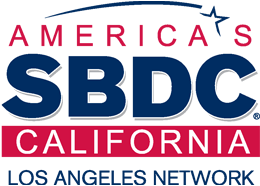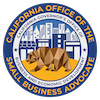You’ve heard about crowdfunding. It’s everywhere. You’ve heard about other entrepreneurs raising money to grow their businesses. But if you find yourself muttering any of the following in the mirror, please allow us to share a different perspective on these common misconceptions with you:
1. Crowdfunding Is just Panhandling: If you’re asking for money, you’re actually doing this wrong. Small businesses succeed in “rewards-based” crowdfunding (Indiegogo, Kickstarter) by offering exclusivity, VIP status, and unique pre-sale items and experiences directly to their existing and prospective customer base. Great examples of non-physical offerings are letting people name a product or putting the contributor’s picture/name on a wall of fame.
2. The Best thing about Crowdfunding Is Money: Obviously, additional capital is useful to any business, but it’s not the most useful thing that comes from the crowdfunding process; the greatest rewards come from deeply engaging new and existing customers. When you effectively share your mission and purpose, like-minded customers become your evangelists who do a lion’s share of your marketing for you – for years to come. They often will also help you better develop your productmarket fit, your messaging, even what new products to add to your line or new features to add to your service.
3. It’s a Distraction: Everything you need to do to give you a shot at a successful crowdfunding campaign – expanding your social media reach, improving regular communication with your existing customers or newsletter, identifying and deepening relationships with key influencers, reaching out to media in your niche – all will turbocharge your business, whether you are crowdfunding or not. In fact, odds are, you’ve been meaning to get around to tackling these things anyway; crowdfunding is a perfect way to accomplish all these things and get the benefits mentioned in #2.
4. It’s not as Good as VC Money: To raise money the traditional way, you identified an amount you needed to fuel a growth plan, you held about 50 lunches and 200 phone calls with investors, wrangled them all into a term sheet that gave away as much as 49% of your business and you were left with… money and investors to answer to. You still had to find customers, get them to buy, and hope the enterprise earned enough to create a satisfactory multiple for the investors. With rewards-based crowdfunding, your funding comes from your market. The fundraising is the business. The more you raise, the smarter your business becomes, and the more you are worth. And you still own 100% of your equity.
5. It’ll be Annoying to My Friends and Colleagues: Data shows that while people may say they’re annoyed by repeated communication from crowdfunding friends, they will actually contribute more, the more they’re contacted. On Indiegogo for example, campaigns that update their followers 31-50 times over the span of the campaign raise over 4 times as much as those that update 0-5 times.
6. The Crowd is Waiting on me for the Crowdfunding Platforms: While there are lots of projects that end up as majority-funded by total strangers, none of them start that way. No one likes to be first to a party, and crowdfunding is similar. Contributors may love you, your business and your offer, but they won’t give to a crowdfunding project until they see that you’ve reached about 30% of your stated goal. That means you have to start the momentum with your rolodex, social media and family.
7. I’ll just Hire Someone to take Care of my Campaign: There are some reputable consultancies who can singlehandedly take over and run your campaign, but they are quite expensive, and will inevitably lack the deep understanding and knowledge of your business, service and product. Expect to be hands-on for a solid 60 days, if you want to give yourself your best shot. This includes preparing your pitch, choosing rewards and doing some hands-on friends & family outreach first, and later getting involved with project updates and synthesizing learning that comes from customers’ feedback.
8. I can do it in My Spare Time: No, you can’t. (And what’s spare time?) Data shows that campaigns with several “owners” far outperform those with a single owner, so, enlist partners. They’ll share the time commitment, broaden your first circle of relationships, and provide a variety of voices to spread the message.
9. If I Use an Equity Platform now, I’ll SCARE OFF Later Investors: If you choose to go the equity crowdfunding route (think AngelList, Crowdfunder, et. al.), you can amass a large number of small-dollar investors who can fuel your growth, often at more favorable terms than you’d get from a VC. The growth you create can better position you for an institutional round, and most if not all VCs recognize a successful equity crowdfunded round as a validation rather than a burden. Maybe the way of the future is what Neil Young’s Pono Music did: they ran a presale, rewards-based crowdfunding campaign that raised over $6 million for their PonoPlayer, then used the momentum created to do an equity-based crowdfunding campaign that sold shares in Pono Music (in part to the same contributors) and raised over $10 million.
10. There’s Nowhere For Me to get Help: I have great news for you: you have the California Small Business Development Centers (SBDC)! Through L.A. Chamber’s own Bixel Exchange, you can sign up right now for consulting hours with some of the best minds in the industry at no cost to you (thank you, LA Area Chamber of Commerce, SBA, LA Regional SBDC Network, and Go-Biz!). You’ll get help choosing the right crowdfunding platform, and help with strategizing and mapping out a campaign that can accelerate your business’s growth.






